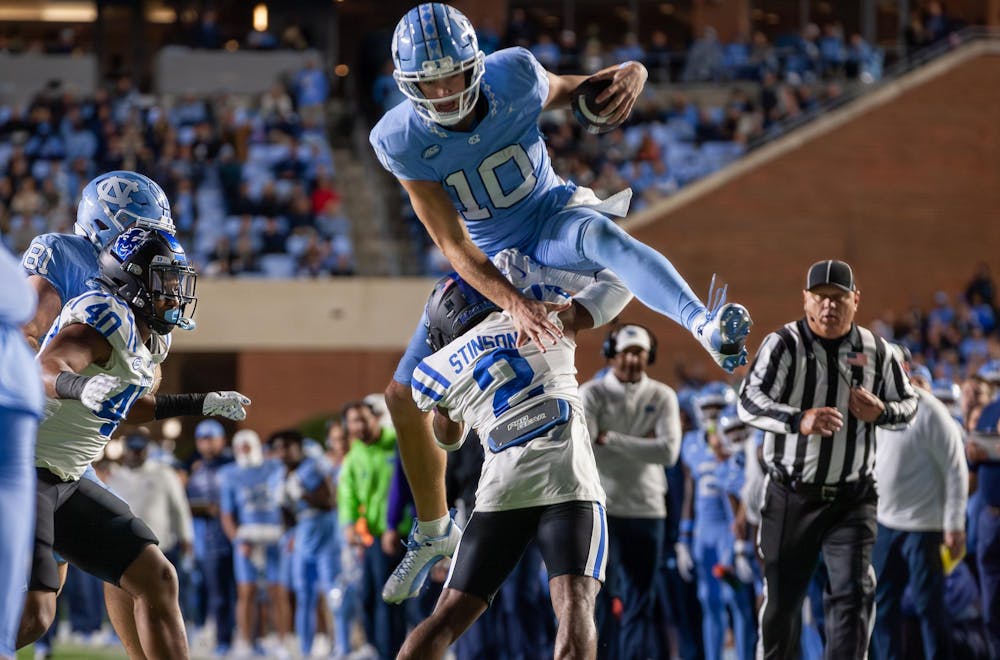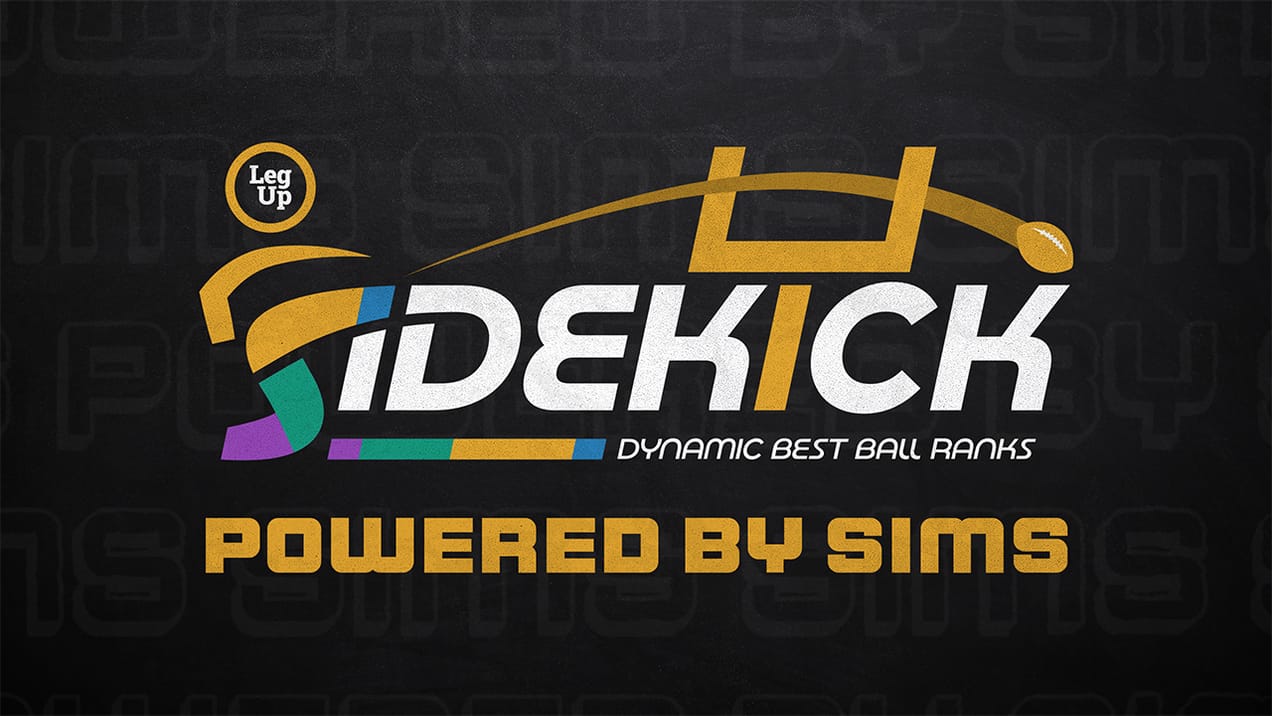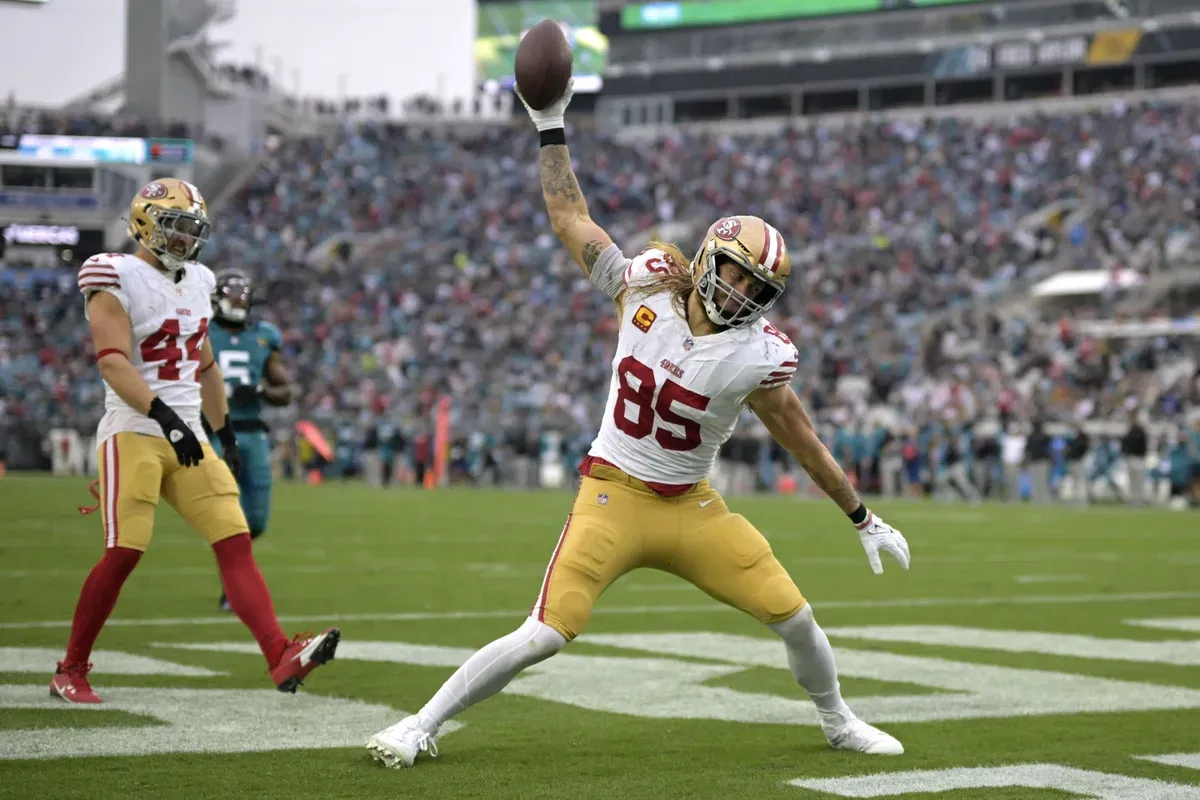
Drake Maye's Superstar Ceiling—Rookie QBs Tiers 1-2
Every rookie class has its strengths and weaknesses. And as we'll get to in future posts, this class doesn't offer a ton at running back. However, it helps make up for that with a group of quarterbacks set to change the fortunes of multiple NFL franchises.
With four QBs looking like locks to go in the top 13 picks of the NFL draft, it's critical for NFL scouts on QB-needy teams to evaluate these QBs correctly. It's also vital for fantasy managers.
But we are trying to accomplish distinctly different goals.
With the draft still over a month away, there will be lots of intrigue surrounding when the top QBs will go off the board. But don't lose sight of a simple fact—for our purposes, most of the draft capital movement at the top of the draft does not matter.
It matters to an extent. If any of these prospects land in situations where they aren't expected to start right away or see a Will Levis-style slide out of Round 1, that definitely matters. It's also not ideal for a rookie QB to land on a barren depth chart (looking at you, Patriots).
But if Jayden Daniels or Drake Maye falls past No. 2 and lands with the Vikings, Broncos, or Raiders, I promise you that by late summer, no one is going to care about the exact spot they went off the board. By that point, we'll have moved on to more relevant concerns—their path to 2024 playing time and potential for production. All three situations create clean paths to productive rookie seasons with depth chart competition who will have a hard time holding off an an early Round 1 pick for long.
This year, the line in the sand looks to be the Raiders at pick 13. If Daniels, Maye, or J.J. McCarthy slips past the handful of QB-needy teams ahead of pick 14, that would clearly signal serious NFL skepticism about that QB. It also increases the risk of that QB sitting for most or all of his rookie season.
But before that, we're largely looking at situations where an NFL team will have signaled franchise-level commitment and a corresponding path to rookie season playing time.
Things could get a little wonky in New York, with the Giants potentially using Daniel Jones as a bridge QB to create a true redshirt rookie QB season. But even that would be a best-ball-only calamity. Eventually, you're going to be pretty excited about the No. 6 overall pick running a Brian Daboll offense.
Essentially, I'm arguing that we should zoom out and think about draft capital from a tier-based perspective.
It matters where the NFL takes these guys. It matters a lot, actually. But the difference between No. 2 and No. 5 isn't very impactful. The difference between No. 5 and No. 35 is massive.
A tier-based draft-capital approach allows us to be more focused on what these QBs do well from a fantasy perspective than the exact order their names are called on April 25th.
I covered this a bit in last year's intro before landing on Anthony Richardson as my pre-draft QB1. But in short... I am a fantasy analyst. It is not my job to predict which QBs are most likely to earn a contract extension in 4-5 years. I'm trying to help you beat a stats-based computer game.
In dynasty, my goal is to predict who will gain value in their rookie seasons. We then need to reassess those investments.
In best ball, my goal is to determine which QBs will actually play as rookies and which have immediate spike week upside the instant they see an NFL field.
When evaluating Anthony Richardson's prospect profile last year, his rushing ability was obviously his main appeal. But he wasn't just a 2023 target because he ran.
Richardson was also a far better deep passer than his critics let on. And even his negatives were overblown... assuming your goal was to win a fantasy football league.
Yes, Richardson was (and is) an inaccurate short-area passer. But, um, good? We want him to pick up five yards with his legs rather than his arm.
We're a year out from the Anthony Richardson bet and... he could end up going down in NFL history as a bust.
But Joe Burrow won't.
Richardson played literally four NFL games – half of which he got injured in – yet this type of dynasty trade is now in range.

One of the main negatives you'll hear on a QB in this year's class is an overreliance on hero-ball, but is that really a negative for our purposes?
Isn't it... a positive?
If a guy is hunting for big plays, he's hunting for fantasy points.
Sure, that style can get a QB benched. But it takes a lot to get benched when you've been anointed a franchise QB.
Zach Wilson was truly horrendous in the first six games of his career. He then injured his knee and missed four weeks, during which he was outplayed by Mike White and Joe Flacco. Yet once healthy, Wilson returned to the lineup and subjected the world to another seven games. That totals to... 17 games. As bad as he was as a rookie, Wilson never got benched for performance.
And look, we want to avoid drafting Zach Wilsons. But I bring him up to emphasize that we can afford to be a little looser with our player evaluations than NFL GMs. We know what traits lead to fantasy points and we should seek out those traits. Let the professionals worry about footwork.
Admittedly, if we land on Wilson, it hurts. But it hurts a lot less than it does for the GM making the same mistake. Despite a disastrous debut to his real life NFL career, Wilson finished QB30 in Underdog scoring as a rookie. And he retained some superflex dynasty trade value. Wilson's rookie season was a loss, but it was survivable. The Jets don't live in a world where they could cut bait on Wilson after one bad year. We do.
Let's get even grosser... and talk about Trey Lance.
Despite being drafted No. 3 overall, Lance started just two games as a rookie, immediately raising serious (and accurate) concerns that he was a failed experiment. Naturally, seeing things play out this way in 2021, dynasty managers dutifully factored in his downside risk and gravitated to safer options.
Just kidding.
During Lance's disastrous debut season, he flashed exciting rushing potential. Despite attempting just 71 passes as a rookie... Lance got more expensive.

Think about that. Trey Lance is as clear of a bust as we've ever seen.
In best ball, appropriately, he was an unmitigated disaster. But in dynasty, there was an entire offseason where he provided a profitable sell window.
That doesn't mean we should abandon QB talent evaluations in dynasty. Rather, it means we should lean into evaluating fantasy-friendly traits.
As long as we also remain focused on the NFL situation for these players – factoring in ongoing franchise commitment – we can prioritize the QBs with the best skillsets for producing fantasy points.
Tier 1 - Franchise QBs
Caleb Williams
At a Glance
Before he even played a single snap in 2023, Caleb Williams was expected to go No. 1 overall in the 2024 NFL draft. His final season wasn't as spectacular as his Heisman-winning 2022 campaign, but he nonetheless solidified his status as the top QB in the draft with underrated traditional dropback chops and electric playmaking ability.
NFL GMs and superflex rookie drafters are in the same boat—if you want Williams, you need the No. 1 pick.
Positive Indicators
Caleb Williams' incredible ability to sustain plays immediately jumps off the screen. He turns would-be lost downs into instant highlights. And there are a number of reasons to think that Williams' playmaking ability will translate into high-level fantasy production at the NFL level.
Although Williams isn't huge, at 6-foot-1, 214, he has the frame to operate as a mobile creator at the next level. And with 27 rushing TDs in 35 college games, he has a knack for finding the end zone when leaning on his legs.
Williams also has a hell of an arm. With a big-time-deep-throw on 4.6% of his career dropbacks, Williams slots in just between Justin Herbert (4.6%) and Jameis Winston (4.5%).
And Williams doesn't resort to playground ball on every dropback. He's impressive in the traditional dropback game as well.
Most notably, Williams has an underrated ability to attack the splash zone (10+ yards downfield and over the middle), sporting a PFF passing grade of 97.2 on splash zone throws—which should help him quickly transition to the modern NFL passing game.
Red Flags
Williams is extremely comforatable outside of structure... but that sometimes leads to problems.
For starters, with a pressure to sack rate of 19%, Williams takes sacks. However, his sack rate isn't high enough to be a major concern. It's the type of thing Williams will want to work on as his game progresses rather than a serious worry.
Still, given the hype surrounding Williams it's worth noting that he's more likely to generate negative plays than a top-end escape artist like Patrick Mahomes. We can see this by how frequently each quarterback was sacked when moving off his first read.
In his final season at Texas Tech, Mahomes moved off his first read on 190 dropbacks. He took just six sacks, for a rate of just 3.2%.
Meanwhile, in his final season, Williams moved off his first read on 118 dropbacks, but took 10 sacks (8.5%). This was slightly better than Williams' 8.6% career rate.
Mahomes creates magic when working outside of the primary design of the play and consistently avoids negative plays. Williams still needs to work on the latter.
But if we're going to subject Williams to a Mahomes comparison, lets give him his due. On 350 career non-first-read dropbacks, Williams aslo produced 25 big time throws (7.1%), besting Mahomes (6.3%).
Williams style of play is likely to lead to some frustrating early-career outings. But he's also a strong bet for true spike weeks as soon as he takes an NFL field.
Statistical Comps
- Baker Mayfield
- Joe Burrow
- Trevor Lawrence
- Patrick Mahomes
Baker Mayfield shows up as Williams' closest comp. And even after his bounce-back 2023 season, you don't love to see that.
Mayfield underlines some of the issues that Williams had when the offense was on his shoulders—like Mayfield, Williams had issues taking care of the ball when moving past his first read. Mayfield also took a sack on 20% of his pressured dropbacks, just ahead of Williams (19%).
But both QBs were also playmakers. Mayfield hit a big-time-deep throw on 4.4% of his dropbacks, just behind Williams (4.6%). Mayfield was a willing scrambler, which helped him run for 23 yards per game, just behind Williams (26). And encouragingly, Williams rushed for 0.73 TDs per game, a signficantly higher rate than Mayfield (0.44).
Joe Burrow shows up as comp for similar reasons as Mayfield. He was a college sack taker with a 22% pressure to sack rate and a strong deep passer, with a 4.7% big-time-deep-throw rate. Like Mayfield (4.3%), Burrow (4.2%) scrambled from a clean pocket at a higher rate than Williams (3%), helping him hit 22 rushing yards per game. But Burrow was the worst TD threat of trio, rushing for just 0.34 TDs per game.
Trevor Lawrence was the last QB to be anointed the No. 1 pick in the draft before his final season, so it's fitting he's one of Williams' closest statistical comps. Lawrence doesn't bring the same mobility to the table as Williams, but he scrambled from a clean pocket at a similar rate as Williams. As passers, both QBs combine excellent deep passing with a willingness to get aggressive when pressured... even if it means taking risks.
Patrick Mahomes fittingly closes out the comp list. Mahomes is a name that comes up a lot in Williams' scouting reports. Evaluators usually invoke Mahomes as a way to describe Williams' difference-making out-of-structure ability. But Mahomes and Williams share statistical similarities as well. Both QBs impressed when throwing deep and to the splash zone. And under pressure, both were aggressive and accurate passers.
However, Mahomes was much better at avoiding mistakes when forced off his first read and much better at avoiding sacks in general. Williams is a rare player who has the potential to produce Mahomes-ian highlights with regularity. But he still has work to do to get to match the deadly consistency that Mahomes also brings to the table.
Notably, Caleb Williams was a more productive rusher than all four of his comps. As a result, these comps understate how dangerous he is in the designed running game. However, Williams clean pocket scramble rate (3%) was significantly lower than Mahomes' (4.9%), Mayfield's (4.3%), and Burrow's (4.2%). He's closest to Trevor Lawrence (2.3%) in that regard.
So although Williams is a dangerous runner when called upon, these comps are a reminder that when he drops back, Williams is generally looking to move the ball downfield through the air.
Best Ball/Dynasty Outlook
Williams is an excellent prospect. NFL evaluators generally have him in the same tier as Trevor Lawrence entering the NFL—the type of QB prospect who we can confidently bet on to be a long-time NFL starter. And Williams shares Lawrence's aggressive mindset and high-end arm talent, with signficantly better mobility. That's a recipe for fantasy success.
The NFL's confidence in Williams also makes it easier to bet on his high-end playmaking ablity without fretting about his penchant for mistakes. Williams isn't seen as a developmental project. If he thoroughly dissappoints in 2024, Williams is still starting every single game in 2025. In that scenario, it's Shane Waldron and Matt Eberflus who need to worry, not Williams' dynasty managers.
Understandably, the market is excited about Williams. Even with Marvin Harrison Jr. looking like a truly elite WR prospect, Williams is shaping up as the top pick in superflex dynasty. Personally, I've begun to tilt a bit toward Harrison there. But until I know that he's not New England bound, I'd rather bet on Williams than Harrison with the first pick.
In best ball, Williams isn't cheap, but he's fairly attainable, with an ADP in the 10th round. Some elements of Williams' game could use some refinement, but he should score fantasy points out of gate.
Best Ball Recommendation
Target.
Superflex Rookie Draft Grade
1.01 worthy.


